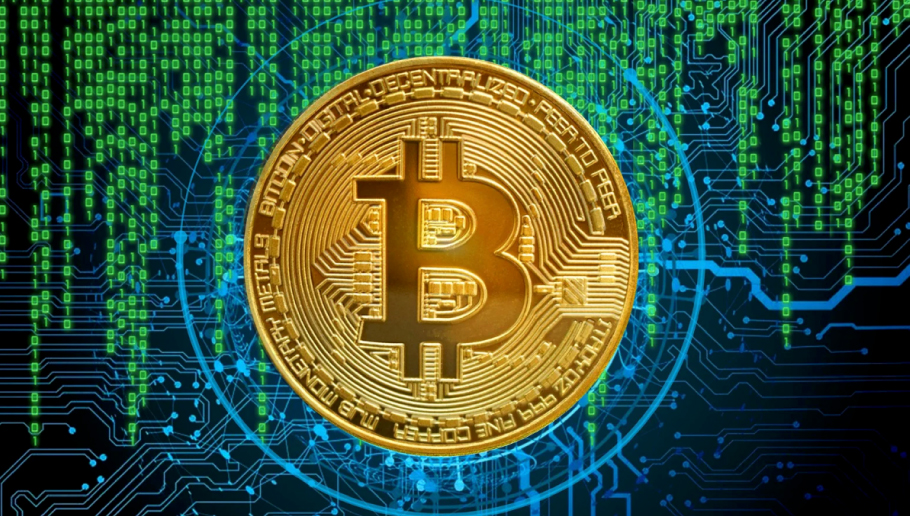FROM MY VANTAGE POINT
Layer 2 Scaling Solutions: A Comprehensive Guide
Cryptocurrency has come a long way since Bitcoin’s inception. The network has evolved into a complex and diverse ecosystem with thousands of currencies and tokens. As the popularity and adoption of digital currencies continue to grow, so too does the need for a scalable and efficient infrastructure to support these transactions; this is where Layer 2 scaling solutions come into play.
How Layer 2 Scaling Solutions Work
Layer 2 scaling solutions are a crucial advancement in the cryptocurrency world, offering a remedy to the scalability issues that have historically plagued blockchain networks. These solutions promise to revolutionize how cryptocurrency participants use, trade, and apply their digital currencies in various sectors.
At their core, Layer 2 scaling aims to increase the capacity of blockchain networks by moving some of the transaction processing off the main blockchain. In essence, these solutions function as a secondary layer built on top of the primary blockchain, hence the name “Layer 2.” The primary objective of these solutions is to alleviate congestion, reduce transaction costs, and enhance the overall performance of blockchain networks.
One of the most popular Layer 2 scaling solutions is the Lightning Network, primarily used with Bitcoin; it enables faster and cheaper microtransactions by allowing multiple transactions to occur off-chain before they eventually settle on the Bitcoin blockchain. This technology relies on smart contracts to facilitate these off-chain transactions securely, promising a higher degree of privacy and scalability.
Another notable Layer 2 solution is the Ethereum Layer 2, which strives to address the scalability problems of the Ethereum network. Ethereum’s popularity and usage have surged recently, leading to network congestion and high transaction fees. Layer 2 solutions for Ethereum, such as Optimistic Rollups and zk-Rollups, aim to increase the network’s capacity while maintaining security and decentralization. These solutions allow many transactions to be bundled and processed in a single transaction, thereby reducing congestion on the main Ethereum chain.
The Crypto Implications and Uses of Layer 2 Scaling Solutions
The present and future implications of Layer 2 scaling solutions are profound. Such solutions offer significant benefits to cryptocurrency users, like reduced transaction fees and faster confirmation times, which make cryptocurrencies more practical for everyday use. The same applies to digital microtransactions, which can become more feasible and efficient through a Layer 2 scaling lens. Subsequently, these key changes can potentially drive greater cryptocurrency adoption in different markets – a critical driver of the market’s growth in 2024 and beyond. When cryptocurrencies are faster, cheaper, and more accessible, they become a more attractive option for individuals and businesses. This increased adoption can lead to a more widespread and mainstream acceptance of digital currencies.
As we look ahead to 2024 and beyond, Layer 2 scaling solutions are poised to have a profound impact on the cryptocurrency landscape. These resources are not just a temporary fix – but rather a sustainable solution to the scalability challenges that have long hindered blockchain networks. In turn, the cryptocurrency market stands to become more accessible, flexible, and efficient for a wider range of participants.
Bolstering Institutional Participation in Bitcoin During 2024
Perhaps one of the most crucial drivers of Bitcoin’s evolution has been the increasing engagement of institutional investors. Such activity stands to stimulate the Bitcoin market while dispelling ongoing fears and unfounded stigmas associated with cryptocurrency at large.
Now, with a pivotal 2024 on the horizon, the Bitcoin community must continue to foster a culture of institutional inclusion and participation, as this will position the market for further innovation and expansion.
The Vital Role of Institutional Interest in Bitcoin
It is key to recognize that institutional interest in Bitcoin is not merely symbolic – but, rather, a dynamic catalyst for the cryptocurrency’s sustained expansion and real-world implementation. Several compelling factors underscore this notion’s importance.
For instance, institutional players offer substantial resources and a wealth of expertise; their entry into the Bitcoin market contributes significantly to its maturation by infusing it with capital and knowledge. This maturation, in turn, elevates Bitcoin’s allure for other institutions and retail investors, fostering a more robust and liquid ecosystem. Institutional involvement also serves as a powerful testament to Bitcoin’s credibility and potential. Validation stimulates curiosity among the broader public, potentially driving greater adoption.
Additionally, the presence of institutional investors exerts pressure on regulators to establish clear guidelines for cryptocurrencies. This regulatory clarity is not only beneficial for Bitcoin but also for the entire cryptocurrency sphere, as it creates an environment characterized by compliance and legitimacy. Bitcoin also offers attractive diversification benefits for institutional portfolios due to its minimal correlation with traditional asset classes. As more institutions recognize these advantages, their entry into the Bitcoin market becomes increasingly probable.
Considerations For Institutional Participation
Encouraging institutional participation in Bitcoin entails a comprehensive approach – one that accommodates the distinct needs and concerns of such stakeholders. Fundamentally speaking, the Bitcoin community should continue its educational endeavors targeted at institutional investors, providing accessible and comprehensive insight, conducting informative seminars, and organizing webinars and other discussions to demystify the cryptocurrency landscape and rectify enduring misconceptions.
Transparent engagement with regulators and policymakers is also paramount. Such collaboration can lead to regulatory frameworks that harmonize protection and innovation, creating an environment conducive to institutional participation. Similarly, Bitcoin’s infrastructure must continually evolve to meet institutional standards, offering secure custody solutions, reliable trading platforms, and robust compliance tools – all of which may instill confidence in institutional investors.
In addition to these strategies, it is essential to remain apprised of adjacent trends and their implications for the market’s future. The burgeoning growth of decentralized finance (DeFi) platforms, for example, presents both opportunities and challenges from a technological and macroeconomic standpoint, and the Bitcoin community should actively monitor and engage with such developments to explore potential synergies and address regulatory concerns. Central Bank Digital Currencies (CBDCs), on the other hand, may inadvertently emphasize Bitcoin’s value proposition as a decentralized digital asset – and positioning Bitcoin as a hedge against potential CBDC-related risks could make it more appealing to institutions focused on this matter.
Broad institutional adoption remains a key variable for Bitcoin’s present and future. By building an increasingly dynamic, adaptable culture rooted in peripheral advancements and stakeholder advocacy, the Bitcoin community will continue to reach its potential in 2024 and beyond.
A Comprehensive Look at Bitcoin Lightning Payments
Bitcoin has risen as a battle-tested entity in the larger cryptocurrency sector, and scalability represents one space in which it has innovated to broaden its adoption and overall recognition. In this vein, Bitcoin lightning payments have been a transformative solution for how we perceive and use cryptocurrency.
At their core, Bitcoin lightning payments are a second-layer scaling solution built atop the Bitcoin blockchain; they aim to address Bitcoin’s scalability limitations by enabling fast, low-cost transactions off the main blockchain. This outcome stems from creating payment channels, which allow users to conduct transactions without requiring every single transaction to be recorded on the main blockchain. Instead, a series of transactions can occur off-chain, and the final outcome eventually settles on the main blockchain.
Imagine two parties engaging in frequent transactions; they can open a payment channel between them, enabling instant and nearly feeless Bitcoin transfers. These transactions can occur as frequently as desired, and the channel can be closed at any time, with the final balance broadcasted to the main Bitcoin network.
Bitcoin lightning payments have already started making waves in the cryptocurrency ecosystem. The speed and cost-effectiveness of Lightning Network transactions have opened doors for microtransactions, enabling new use cases like tipping content creators, paying for online services, and even participating in gaming platforms that require rapid and seamless transactions.
Furthermore, merchants are beginning to recognize the advantages of lightning payments. Online businesses can now accept Bitcoin payments without worrying about high transaction fees or slow confirmation times; this not only expands the utility of Bitcoin but also drives its adoption as a viable payment method.
Moreover, the Lightning Network’s potential for cross-border transactions cannot be overlooked. Traditional remittance services often come with hefty fees and extended processing times. With lightning payments, individuals can send and receive funds across borders almost instantly and at a fraction of the cost, potentially revolutionizing the remittance industry.
The future of Bitcoin lightning payments appears promising, with ongoing developments and trends set to shape its trajectory. As more users adopt Lightning technology, the network’s capacity and efficiency will continue to improve. This scalability enhancement could be a game-changer, propelling Bitcoin into the mainstream as a practical and accessible means of daily transactions.
In addition to its immediate impact, Bitcoin lightning payments could contribute to the broader evolution of decentralized finance (DeFi). Lightning could serve as a backbone for various DeFi applications, enabling faster and more efficient lending, borrowing, and trading of assets directly from users’ wallets.
Looking ahead, the landscape for Bitcoin lightning payments appears promising. One of the key factors that will influence its future is user adoption. As more individuals and businesses embrace lightning payments, the network effect will strengthen, creating a self-reinforcing growth cycle. Technological advancements should also play a vital role. Continued innovation and refinement of Lightning Network protocol will likely result in even faster transactions, increased security, and enhanced user experience; this, in turn, will drive further adoption and investment in Lightning Network infrastructure.
Regulatory developments will also undoubtedly shape the future of Bitcoin lightning payments. As governments and regulatory bodies worldwide develop frameworks for cryptocurrencies, the status of lightning payments will become clearer. A balanced regulatory environment that fosters innovation while ensuring security and compliance will be crucial for the widespread acceptance of lightning payments. In turn, the Lightning Network may continue reaching fruition as the high-level scaling solution the Bitcoin community has needed.
SaaS in Finance: Five Defining Characteristics
Software-as-a-Service (SaaS) has revolutionized numerous industries in recent years, and finance is no exception. With its scalability, flexibility, and cost-effectiveness, SaaS has become a game-changer for financial institutions, enabling them to streamline operations, enhance data security, and improve customer experiences.
Moving forward, SaaS in the finance industry will likely significantly impact existing financial infrastructure and ideology, altering the trajectory of this vital sector’s efficiency and overall functionality for years to come. This fact is evident, in part, through the technology’s primary benefits and characteristics, including:
Agility: Empowering Financial Innovation
In an ever-evolving financial landscape, agility is paramount. SaaS provides financial institutions with the ability to quickly adapt and innovate in response to market demands. With cloud-based platforms, financial organizations can rapidly deploy and scale their software solutions, allowing them to experiment with new products, services, and business models. This flexibility not only accelerates time-to-market but also empowers institutions to address customer needs promptly. As the finance industry continues to embrace digital transformation, the agility offered by SaaS becomes increasingly critical in driving innovation and remaining competitive.
Enhanced Data Security: Protecting Financial Assets
Data security is of utmost importance in the finance sector. SaaS offers advanced security measures, including encryption, access controls, and continuous monitoring, which significantly reduce the risk of data breaches. Robust cloud infrastructure and trusted service providers can aid financial institutions in enhancing data security measures while maintaining compliance with regulatory requirements. Storing and managing sensitive financial data securely is crucial for building customer trust and safeguarding valuable assets. With evolving cybersecurity threats presenting an ever-present threat, the robust data security provided by SaaS solutions becomes a vital defense mechanism in mitigating risks.
Scalability: Meeting Growing Demands
Scalability is a key characteristic of SaaS that directly impacts the finance industry’s ability to handle growing demands efficiently. As financial institutions expand their customer base, introduce new services, or undergo periods of peak demand, SaaS enables seamless scalability without significant infrastructure investments. Cloud-based SaaS platforms can automatically adjust resources to accommodate fluctuating workloads, ensuring uninterrupted operations and optimal performance. This characteristic not only eliminates the need for costly hardware upgrades – but also allows financial institutions to allocate resources more effectively. Scalability empowers the finance industry to meet increasing demands promptly, improve customer experiences, and efficiently manage resources in an ever-changing business landscape.
Cost-Effectiveness: Optimizing Finance Operations
The cost-effectiveness of SaaS solutions is a driving force behind its widespread adoption in the finance field. By shifting from traditional on-premises software to subscription-based SaaS models, financial institutions can reduce upfront costs and eliminate the need for complex infrastructure maintenance. SaaS platforms offer flexible pricing structures, allowing organizations to pay only for the services they require – while providers manage updates and maintenance. Finance entities can allocate their budgets strategically, optimize operational costs, and redirect resources toward core business functions. The cost-effectiveness of SaaS in finance ensures improved viability – especially for startups and smaller organizations looking to compete with larger entities.
Seamless Integration: Enhancing Collaboration and Efficiency
Collaboration and integration across various systems are vital for efficient financial operations. SaaS facilitates seamless integration with existing software solutions, enabling financial institutions to create cohesive ecosystems that share data and processes effortlessly. The interoperability of SaaS platforms with accounting, customer relationship management (CRM), and other financial systems streamlines workflows, eliminates data silos, and enhances overall operational efficiency. Additionally, SaaS solutions often provide robust APIs and developer tools, allowing institutions to customize and extend functionalities according to their unique requirements.
Why El Salvador’s President is Right to Defend Bitcoin
The decision on the part of El Salvador president Nayib Bukele to make Bitcoin legal tender back in September 2021 may have been controversial to some people, both in that nation and the world at large. But in my opinion Bukele was correct to defend Bitcoin, especially during that time. He has recently gone on record as disputing the concept that El Salvador’s economy was left in ruins by the Bitcoin crash, and in November 2022 announced that his country would begin buying one Bitcoin a day.
Let’s look at some reasons why Bukele was right to defend Bitcoin in his country.
All about Timing
El Salvador was the first nation to take this step, though the Central African Republic has since followed suit. Bukele opted for the approval at a time when Bitcoin had come down a bit in price, but it was still a wise investment opportunity. While trends may be changing again right now, there is often a great deal of reward that accompanies risk.
This also helps increase El Salvador’s travel industry, which according to the Inter-American Development Bank (IDB) accounts for 17.9 percent of the nation’s exports and provides over 31,000 jobs. Also, the Lightning Network, a Layer 2 solution that enhances the functionality of the primary network, has proven to be beneficial to the nation’s retailers – notably those on Bitcoin Beach, a coastal area where the crypto has flourished, and which as a result has been targeted for infrastructure upgrades.
Global Reserve Currency Options
While El Salvador may not be in the running as the next global reserve currency provider, there is the possibility that Bitcoin could play a role in the world’s major currency options. The countries that are investing in this new opportunity may have a much more pronounced role than one might expect. Bukele invested $1.5 million more in Bitcoin this past summer – i.e., 80 bitcoins at the price of $19,000 apiece. That’s less than half the average price that the El Salvador government paid previously for its $105.6 million stake.
Paying Attention to the Needs of His People
Bukele’s decision to adopt Bitcoin as legal tender wasn’t something that was done to benefit just the wealthy of El Salvador. Rather, this was a calculated decision that took into account everyone in the country.
While some might be slow to reap the benefits, he believes it’s only a matter of time.
“Patience is the key,” he tweeted on June 18, 2022.
Certainly that is the strategy he is following. Certainly he will continue to wed himself to Bitcoin, even as others waver. Certainly he has hopes that other nations besides the CAR will follow El Salvador’s lead.
To that end El Salvador hosted a conference in June 2022 that included representatives from 44 other countries – places like Nigeria, Pakistan, Kenya and Paraguay. While others have yet to make the jump, the possibility exists that that will come to pass.
There are those who believe that such events will serve as a catalyst, that it’s only a matter of time before other nations take the leap.
In fact, Nayib Bukele is banking on it.
The Exciting Possibilities of the Bitcoin Lightning Network
Decentralized finance has long been viewed as an avenue for the world’s two billion unbanked people to access a financial system and consummate transactions securely. To illustrate the point the website Cointelegraph in May 2022 related the tale of a man identified only as Jorge, who lives in the Southern African nation of Mozambique.
According to the piece Jorge, who works as a surf instructor in the coastal town of Bomba (while also peddling arts and crafts and SIM cards), became the first Bitcoiner in town in 2021, a shrewd move in one of the poorest nations in the world. Only three of every 10 residents have bank accounts, and Mozambique’s per-capita GDP is just $448.
Jorge admitted to Cointelegraph that while few others in his homeland understand Bitcoin, he can buy and sell phone credit on the Bitrefill Bitcoin application, which enables payments to be made in Bitcoin via blockchain or the relatively new Lightning Network, a Layer 2 scaling solution introduced in 2018.
Among other things, Jorge added, the Lightning Network (or LN, as it is often known) enables him to toggle between the currencies favored in Mozambique and one of its neighboring countries, South Africa.
Despite Mozambique’s financial state, half of the country’s 31 million inhabitants have phone subscriptions, and 20 percent have internet access, meaning that such P2P transactions are increasingly possible. Jorge told Cointelegraph he has been able to support his family, which includes four children, as a result of his reliance on decentralized finance in general and the Lightning Network in particular.
As he put it, “Things are pretty.”
Certainly there are other instances that have illustrated the possibilities of the Lightning Network, which as noted makes it possible to consummate transactions off the main blockchain. Those transactions are executed rapidly and with negligible fees, a stark contrast to legacy banking institutions.
In February 2022, the mobile service Cash App integrated with the Lightning Network, enabling users to send Bitcoin to any LN or BTC address. A month later, Portland played host to the “Lightning Festival,” where the full scope of the network was on display. Fifty buyers used the LN to spend the equivalent of $1,800 in Bitcoin over three hours at various stands and shops, and vendors extolled the ease and efficiency of such transactions.
Clay Graham, founder of Rapaygo, a company devoted to enabling LN point-of-sales solutions, noted to Cointelegraph in the wake of that festival that the speed of the network was such that transactions “can clear as fast or faster than cards, so both the buyer and seller don’t feel that ‘where has my money gone.’ ”
In May, the introduction of the Bolt Card increased the LN’s network to an even greater degree, and perhaps not coincidentally network capacity achieved an all-time high of $113 million that month. That was exceeded one month later, when it jumped to $120 million.
It was at the latter point that Danny Brewster, CEO of the UK-based Bitcoin exchange Fast Bitcoins, told Cointelegraph that such “constant growth” represented “a great start” for the Lightning Network.
He added, “I foresee it continuing into the future, as long as all stakeholders, from developers to entrepreneurs building businesses continue to push forward.”






